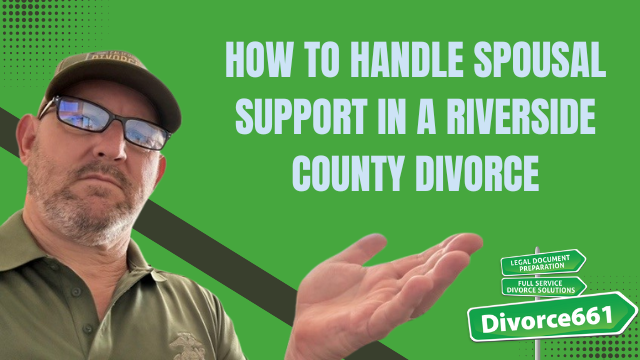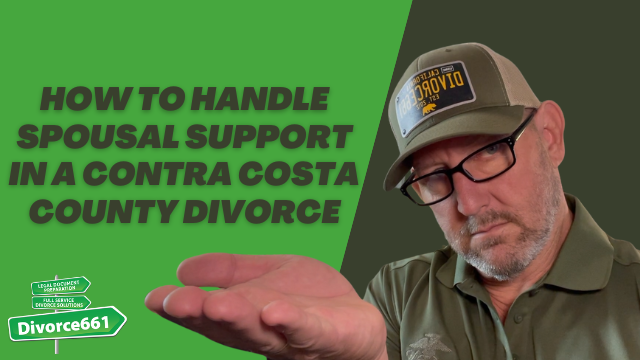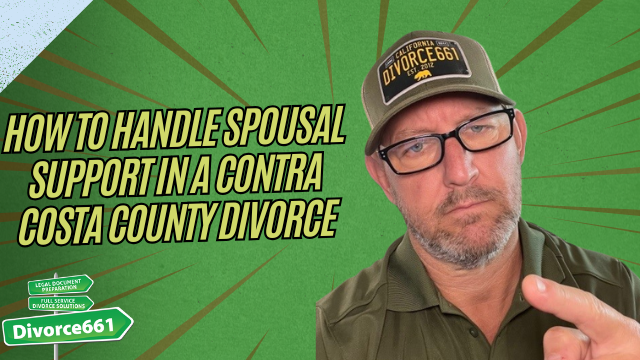How to Handle Spousal Support in a San Bernardino County Divorce
I’m Tim Blankenship from Divorce661. If you’re facing a divorce in San Bernardino County, one of the biggest questions is: how will spousal support (alimony) be handled? In this article I’ll walk you through the basics, explain how California approaches support, outline the options available to couples, and show how a properly documented agreement gets approved by the court.
Quick overview: what is spousal support?
“Spousal support can be a daunting topic, but understanding its basics is crucial.”
Spousal support is money one spouse pays the other after separation or divorce to help with living expenses and to reduce the economic impact of the marital split. In California, support is generally categorized into two types:
- Temporary spousal support: Ordered early in the case to maintain both parties while the divorce is pending. It’s often calculated soon after filing.
- Long-term (or permanent) spousal support: Determined as part of the final judgment and depends on the circumstances of the marriage and the parties at the time of judgment.
How the court decides long-term support in California
Long-term support is not automatic. Courts look at several key factors to reach a fair and balanced outcome. The most important considerations include:
- Length of the marriage: Longer marriages are more likely to result in longer or larger support awards.
- Income disparities: The difference in earning capacity and actual income between the spouses matters a great deal.
- Financial needs and obligations: What each spouse needs to maintain a reasonable standard of living and meet obligations like housing, debt, and child support.
These elements—when assessed together—shape the court’s decision on whether support is needed, how much, and for how long.
Your options as a couple
One of the most important things to know is that spouses can reach their own agreement about support. Options include:
- Including a spousal support provision in your settlement.
- Mutually agreeing to waive spousal support entirely.
- Setting custom terms such as a fixed amount for a set period, or conditions that modify or terminate support (remarriage, cohabitation, substantial income changes, etc.).
Flexibility is valuable—courts will generally honor a properly documented, voluntary agreement that is fair on its face.
Real example: a San Bernardino couple who waived support
We recently worked with a San Bernardino County couple who had similar incomes. They agreed that no spousal support was necessary, documented that agreement correctly, and the court approved it without issue. That’s a simple example of how collaboration and clear documentation can lead to a clean, court-approvable result.
How Divorce661 can help
At Divorce661 we guide couples through the whole process so you can make informed decisions and get paperwork that the court will approve. Our services include:
- Support calculations (temporary and long-term) when needed
- Drafting court-approvable settlement agreements
- Handling disclosures, filing, and final judgment paperwork
- Flat-fee pricing for predictable, affordable help
If you want to understand your options, run support calculations, or get a solid agreement drafted, start with a consultation. We offer a free consultation at Divorce661.com to help you take the next step with confidence.
Practical steps to handle spousal support
- Assess your situation: length of marriage, incomes, and financial needs.
- Decide whether you want to pursue temporary orders while the case is pending.
- Consider negotiation options—include support, waive it, or set tailored terms.
- Document your agreement clearly so it’s court-approvable.
- File the appropriate paperwork and seek court approval (or let us handle filing for you).
Conclusion
Understanding spousal support—temporary versus long-term, the factors the court considers, and the options available—can make your divorce process far less stressful. Whether you and your spouse agree to include support, waive it, or set custom terms, proper calculation and documentation are essential to obtain court approval and move forward.
If you want help running numbers, drafting an agreement, or filing everything correctly in San Bernardino County, visit Divorce661.com for a free consultation. Do you think spousal support should always be required, or should couples be free to waive it? Share your thoughts.










